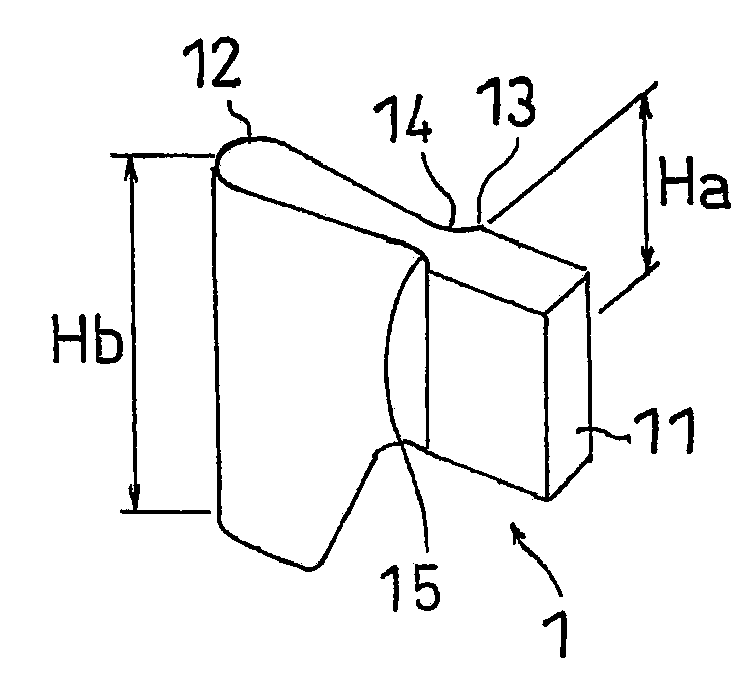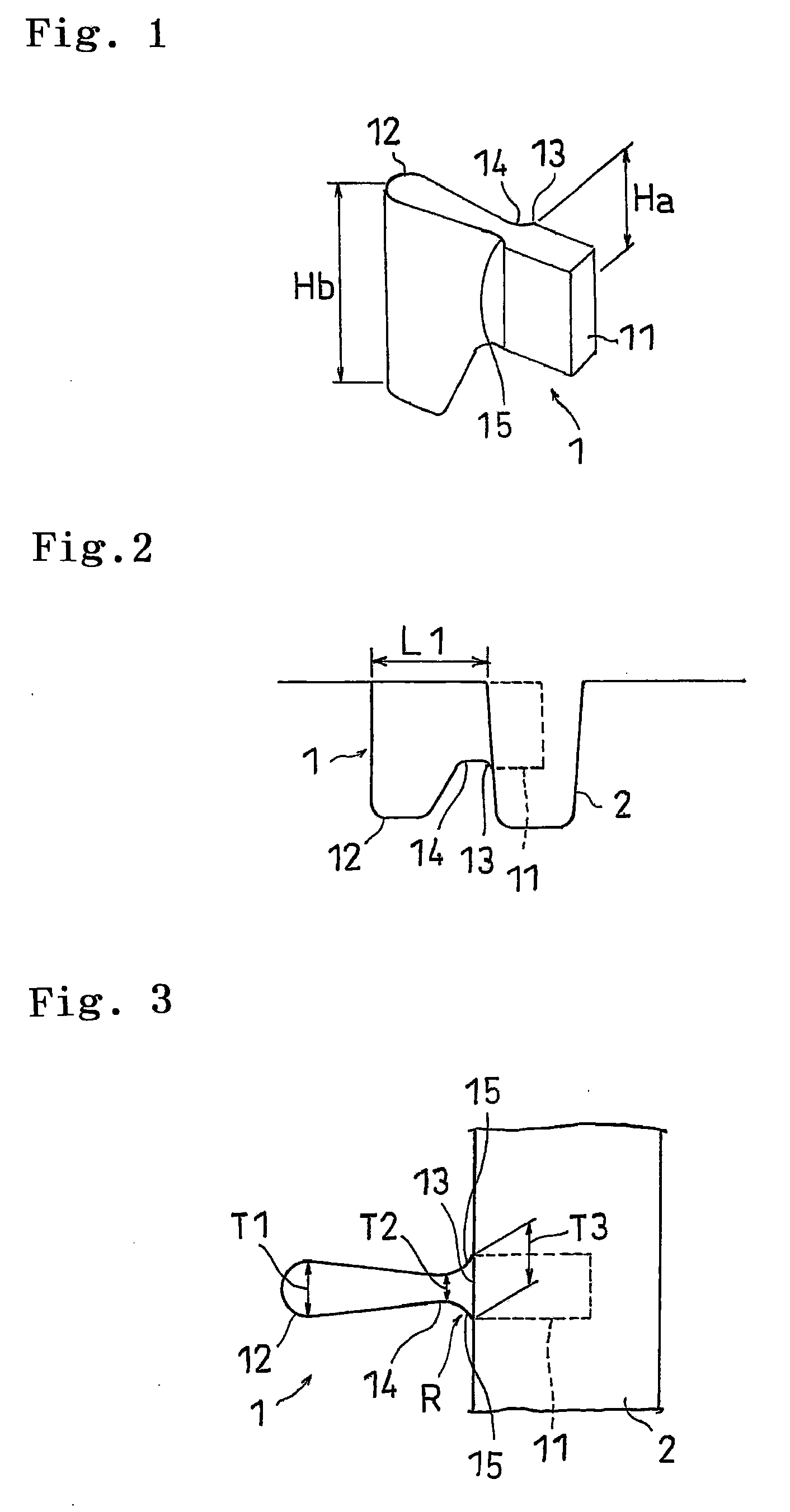Sipe blade and tire molded using the same
- Summary
- Abstract
- Description
- Claims
- Application Information
AI Technical Summary
Benefits of technology
Problems solved by technology
Method used
Image
Examples
examples
[0040]In order to demonstrate the arrangement and effect of the present invention, tires were subjected to vulcanizing processing using the above-described blades and the blades were checked for deforms thereon. As for the blades, the following were prepared. That is, examples having the configuration illustrated in FIGS. 1 to 3; and comparative examples having a configuration illustrated in FIG. 8, the thickness of which was the smallest at a portion connected with the rib. The dimensions of the examples are listed in the example 3 of the table 1. The dimensions of the comparative examples were T2=T3=0.5 mm. The comparative examples were identical to the examples excepting a point that round surface was not formed. In both of the examples and the comparative examples, the blade length was 11 mm, the material of the blade was SUS304, distance between the disposed blades was 5 mm, the material of the rib was AC7A, and the depth of the rib was 14 mm.
[0041]1,000 tires for each were sub...
PUM
| Property | Measurement | Unit |
|---|---|---|
| Length | aaaaa | aaaaa |
| Width | aaaaa | aaaaa |
| Thickness | aaaaa | aaaaa |
Abstract
Description
Claims
Application Information
 Login to View More
Login to View More - Generate Ideas
- Intellectual Property
- Life Sciences
- Materials
- Tech Scout
- Unparalleled Data Quality
- Higher Quality Content
- 60% Fewer Hallucinations
Browse by: Latest US Patents, China's latest patents, Technical Efficacy Thesaurus, Application Domain, Technology Topic, Popular Technical Reports.
© 2025 PatSnap. All rights reserved.Legal|Privacy policy|Modern Slavery Act Transparency Statement|Sitemap|About US| Contact US: help@patsnap.com



